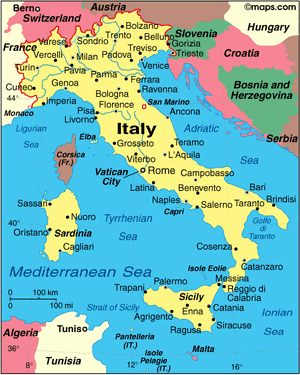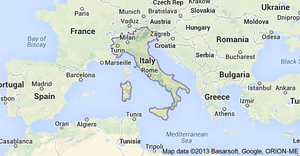Milan Italy


Milan (मिलान) is city in Italy and the capital of Lombardy. Milan was founded by the Insubres, a Celtic people. The city was later conquered by the Romans, becoming the capital of the Western Roman Empire. During the Middle Ages, Milan flourished as a commercial and banking center.
Jat Gotras
History
The foundation of Milan is credited to two Celtic peoples, the Bituriges and the Aedui, having as their emblems a ram and a boar;[1] therefore "The city's symbol is a wool-bearing boar, an animal of double form, here with sharp bristles, there with sleek wool."[2]Alciato credits Ambrose for his account.[3]
Around 400 BC, the Celtic Insubres settled Milan and the surrounding region.[4] In 222 BC, the Romans conquered the settlement, which was then renamed Mediolanum. After several centuries of Roman control, Milan was declared the capital of the Western Roman Empire by Emperor Diocletian in 286 AD. Diocletian chose to stay in the Eastern Roman Empire (capital Nicomedia) and his colleague Maximianus ruled the Western one. Immediately Maximian built several gigantic monuments, like a large circus 470 m × 85 m (1,540 ft × 279 ft), the Thermae Herculeae, a large complex of imperial palaces and several other services and buildings.
With the Edict of Milan of 313, Emperor Constantine I guaranteed freedom of religion for Christians.[5] The city was besieged by the Visigoths in 402, so the imperial residence was moved to Ravenna. In 452, the Huns overran the city. In 539, the Ostrogoths conquered and destroyed Milan in the course of the Gothic War against Byzantine Emperor Justinian I. In the summer of 569, the Lombards (from which the name of the Italian region Lombardy derives, ? Lomrod Jat clan), a Teutonic tribe conquered Milan, overpowering the small Byzantine army left for its defence. Some Roman structures remained in use in Milan under Lombard rule.[6] Milan surrendered to the Franks in 774 when Charlemagne, in an utterly novel decision, took the title "King of the Lombards" as well (before then the Germanic kingdoms had frequently conquered each other, but none had adopted the title of King of another people). The Iron Crown of Lombardy dates from this period. Subsequently Milan become part of the Holy Roman Empire.
External links
References
- ↑ Bituricis vervex, Heduis dat sucula signum.
- ↑ Laniger huic signum sus est, animálque biforme, Acribus hinc setis, lanitio inde levi.
- ↑ "Alciato, Emblemata, Emblema II". Emblems.arts.gla.ac.uk.
- ↑ Tellier, Luc-Normand (2009). Urban World History. Québec: Press de l'Université du Québec. p. 274. ISBN 978-2-7605-1588-8.
- ↑ "313 The Edict of Milan". www.christianitytoday.com. Christian History. Retrieved 14 January 2010.
- ↑ See the Versum de Mediolano civitate.

